Low-Fat Diet Plan For Weight Loss – Benefits And Side Effects
Learn how excluding excess fat from your diet can give you the boost to lose pounds.

Image: Shutterstock
Following a low-fat diet for shedding some pounds is a decades-old approach. However, the latest studies suggest that monounsaturatedi A healthy unsaturated fat that can help reduce bad cholesterol levels in the body, which can decrease the risk of heart diseases. and polyunsaturatedi A type of healthy dietary fat found in both plant and animal foods, containing omega-3 and omega-6 fatty acids. fats may help you lose weight and reduce high blood pressure and inflammation (1), (2), (3). Also, your body requires limited amounts of saturated fats for optimal functioning (4). Nevertheless, doctors may still recommend a low-fat diet if you have a specific health condition (5). This article discusses everything you need to know about a low-fat diet, foods to eat and avoid, its benefits, potential side effects, and more. Keep scrolling!
 At A Glance: Low-Fat Diet
At A Glance: Low-Fat Diet- Principle: A restricted diet where dietary fat contributes to 15% of total calories consumed in a day.
- Purpose: To restrict fat intake from different food sources, regardless of fat type, to reduce the risk of cardiovascular issues and promote weight loss.
- Who It Is For: Individuals trying to lose weight and reduce the risk of heart issues.
- Duration: Short-term
- Who Should Avoid: People with a history of eating disorders, and pregnant or breastfeeding individuals
- Cons: May increase the risk of high blood triglyceride levels and lead to nutritional deficiencies.
In This Article
What Is A Low-Fat Diet?

A low-fat diet is a diet that restricts the daily consumption of dietary fat from animal and plant sources. In a low fat diet, 15% of total calories should come from fat, which is considered as low. Anything less than or equal to 10% of total calories constitutes an ultra-low fat diet.
The new fat intake guidelines allow saturated fats consumption no more than 10% of calories, and trans fats no more than 1% of calories, and urges to replace saturated fats with mono and polyunsaturated fats (6).
 Trivia
TriviaHowever, you can tweak the numbers and customize your diet plan to suit your medical condition or for weight loss as per your doctor’s suggestion.
Moving on, when it comes to dieting for weight loss, many people also swear by low-carb diets. Let us explore how they are different from a low-fat diet.
Key Takeaways
- A low-fat diet may aid in weight loss if dietary intake is followed.
- Consume healthy fats, proteins, and dairy.
- Avoid foods like cream cheese, the fatty parts of pork and beef, and packaged drinks.
- Healthy fats may not be present in sufficient amounts in a very low-fat diet.
- People with specific medical conditions should avoid this diet.
What’s Best – Low-Fat Diet Vs. Low-Carb Diet
The market for low-carb diets is booming right now – from Ketogenic diet to zero-carb diet. But the late 70s and 80s saw a boom in low-fat diets. So, which is better? Let’s see what science has to say:
- A low-carb diet tends to aid slightly more weight loss, decrease harmful LDL cholesterol, increase good HDL cholesterol, and lower triglyceride levelsi It indicates the number of calories converted into triglycerides. The lower your triglycerides, the healthier your diet. (7).
- A low-carb diet may be better when it comes to weight loss and reducing cardiovascular risks (8), (9).
- Low-fat diets (less than 15% of total calories per day) may cause metabolic syndrome in the adult population (10).
- A low-fat diet may lower the HDL (good) cholesterol levels over a period (11).
However, other studies show that one diet is not better than the other, and a diet should be customized according to the needs, medical condition, age, weight, and activity level of the person (12), (13).
So, will going on a low-fat diet help you lose weight? Let’s find out!
Does Low Fat Diet Aid Weight Loss?

Yes, a low-fat diet may help you lose weight if you adhere to the dietary guidelines of unsaturated, saturated, and trans fats intake. Consuming too many trans fats from junk foods will not aid weight loss. Hence, practice mindful and healthy eating and consume nutrient-dense foods for better results.
 Did You Know?
Did You Know?Note an important fact – fats are high in calories, but calories do not always determine the “good vs. bad”. For example, junk foods and zero calorie drinks may be low in calories, but they also do not contain any nutrition and are loaded with harmful trans fats, high amounts of salt and refined sugar, and artificial additives.
You should not avoid consuming the healthy unsaturated fats that help lower inflammationi A rash or swelling in the body caused by your immune system's defense against harmful elements attacking your body. and inflammation-induced weight gain (14).
Different diet plans affect the body differently. While a low-fat diet may be the most common among preferred diets for a quick weight loss journey, it may not be the most effective one. The graph below shows how different types of diet affect the total weight loss percentage of the body. A low-fat diet promises good results, while a high-protein diet is the most effective choice to reduce fat mass.

Comparison Of Effectiveness Of Different Diets On Weight Loss
Source: Body Composition Changes in Weight Loss: Strategies and Supplementation for Maintaining Lean Body Mass, a Brief ReviewHowever, if you need to go on a reduced-fat diet temporarily and your doctor approves it, here’s a list of healthy foods that you can eat and the ones that you should avoid while on this diet.
Foods To Eat On A Low-Fat Diet

- Healthy Fats – Olive oil, avocado, avocado oil, walnut, almond, pistachio, chia seeds, flax seeds, peanut butter, almond butter, pepita, and ghee.
- Protein – Fish, skinless chicken breast, eggs, mushroom, tofu, soybean, soya chunk, lentils, kidney beans, sprouts, chickpeas, Bengal gram, peas, and edamame.
- Dairy – Low-fat milk, low-fat yogurt, and low-fat cheese in limited amounts. *full-fat dairy would be the best choice for weight loss. Please consult your dietitian to know if you should consume low-fat or high-fat dairy.
- Veggies – Carrot, broccoli, cabbage, Chinese cabbage, beetroot, bok choy, scallions, radish, kale, spinach, radish greens, chard, rhubarb, tomato, cucumber, squash, bitter gourd, bottle gourd, onion, okra, eggplant, and cherry tomatoes.
- Fruits – Avocado, apple, pineapple, peach, plum, orange, tangerine, lemon, lime, and sweet lime.
- Beverages – Water, homemade buttermilk, green tea, herbal tea, black coffee (avoid if you are caffeine sensitive), and freshly pressed fruit juice or smoothies without added sugar or sugar-free.
- Herbs And Spices – Cilantro, oregano, garlic, ginger, dill, fennel, cumin, coriander, turmeric, mace, saffron, nutmeg, cinnamon, cardamom, allspice, chili flakes, cayenne pepper, sage, basil, and star anise.
Foods To Avoid On A Low-Fat Diet
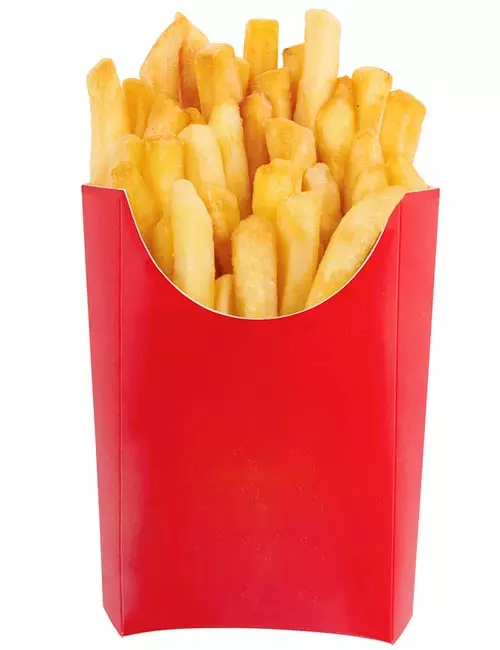
- Junk Food – Fried foods, frozen foods, zero-calorie drinks, soda, refined sugar, and processed foods.
- Protein – Fatty part of beef and pork.
- Dairy – Cream cheese.
- Beverages – Packaged fruit juice, packaged smoothies, soda, diet soda, and packaged buttermilk.
Here’s a low-fat diet sheet that you can take a screenshot of and use on the go.
Low-Fat Diet Sheet
| Food Type | Foods that can be eaten regularly (little or no fat and/or ‘healthy’ foods) | Foods to be eaten in moderation | Foods to avoid or to eat rarely (high in fat and/or ‘unhealthy’ foods) |
|---|---|---|---|
| Cereal foods | Wholemeal flour and bread Porridge oats High-fiber diet breakfast cereals Wholegrain rice and pasta | White flour and bread Low-fibre breakfast cereals White rice and pasta Plain biscuits Plain or fruit scones | Croissants Fried bread Most cakes and biscuits Pastries Suet pudding |
| Fruit, veg and nuts | All fruits and vegetables Dried beans and lentils Baked potatoes Dried fruit Walnuts | Oven chips Avocados Olives Almonds Pecans Hazelnuts | Chips Fried or roast potatoes Fried, creamed, buttered or cheesed vegetables Crisps and potato snacks Coconut Brazils Roasted peanuts |
| Fish | Fresh salmons, herring, mackerels, tuna, sardines etc, white fish | Shellfish | Fish roe Caviar |
| Meat | Lean meats without skin, such as chicken and other poultry | Lean ham, beef, pork, and lamb Lean mince Liver and kidney | Visible fat on meat Crackling Sausages Ptés Duck, goose Meat pies/pasties |
| Eggs, dairy foods | Skimmed or semi-skimmed milk Cottage or curd cheese Low-fat yoghurt Egg whites | Edam Camembert Parmesan Up to 3 egg yolks a week | Whole milk Cream Ice cream Most hard cheeses Chocolate Cream cheese |
| Fats and spreads | None | Low-fat spreads Margarine high in polyunsaturates Corn oil, sunflower oil and olive oil | Butter Dripping and lard Margarine not high in polyunsaturates |
| Drinks and soups | Tea and coffee Mineral water Fruit juices | Packet soups Alcoholic drinks | Cream soups Milky drinks Sugary drinks |
It is clear from the lists above what you must eat and avoid to follow a low-fat diet. Here’s a sample low-fat diet plan to help you understand what, when, and how much you should consume to lose weight.
Sample Low-Fat Diet Meal Plan
| Meals | What To Eat |
| Early Morning (6:00-7:00 a.m.) | 1 cup water with a teaspoon of apple cider vinegar |
| Breakfast (6:45 – 7:45 a.m.) | 1 medium bowl oatmeal with low-fat milk and berries and 4 almonds |
| Mid Morning (9:30 – 10:30 a.m.) | 1 cucumber with 1 small cup hummus dip |
| Lunch (12:30 – 1:00 p.m.) | 1 cup tuna salad or mushroom salad + 1 cup buttermilk |
| Snack (3:30 – 4:00 p.m.) | 1 cup green tea + 1 digestive biscuit/2 saltine crackers |
| Dinner (7:00 – 7:30 p.m.) | 1 cup lentil soup with veggies |
This diet will work wonders for you. But check with your doctor before following this diet plan. Also, unless you start healthy cooking and healthy eating, you will not be able to tell if there are hidden calories in your food in the form of sugar, salt, and sauces. So, it is best that you start preparing meals at home. We understand that you are tired and have no time to cook – but the recipes below will take just 15-30 minutes to prepare. So, give it a go.
Low Fat Diet Recipes
1. Breakfast Smoothie
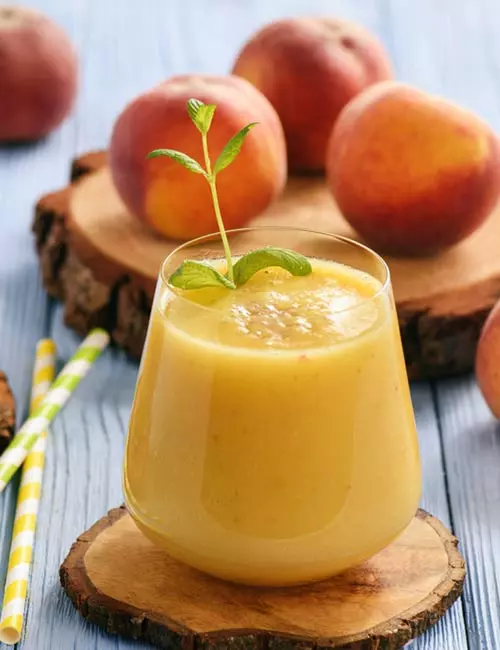
Ingredients
- 2 peaches, pitted
- 1 orange
- 1 cup soy milk
How To Prepare
- Toss all the ingredients into a blender.
- Blitz well and pour the smoothie into two glasses.
- Say cheers!
2. Lunch Salad
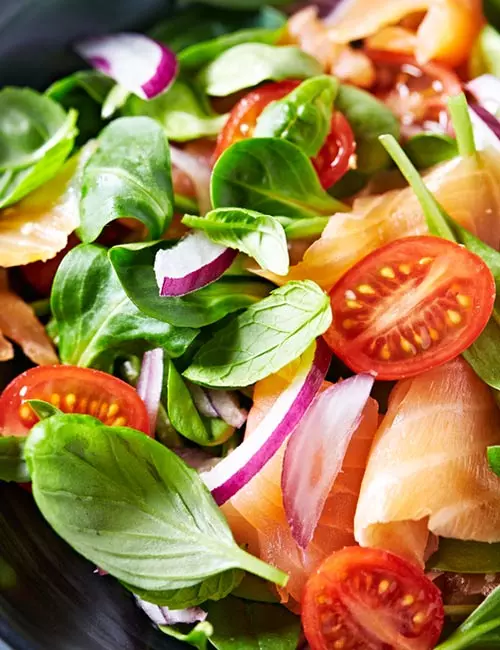
Ingredients
- 3 oz smoked salmon, thinly sliced
- 4 cherry tomatoes, halved
- 1 cup baby spinach
- ¼ onion, sliced
- 2 tablespoons olive oil
- ½ teaspoon black pepper
- Salt to taste
- 2 tablespoons lime juice
How To Prepare
- Toss in the smoked salmon, baby spinach, onion slices, and cherry tomatoes.
- Add lime juice, salt, pepper, and olive oil.
- Toss well, and your lunch is ready!
3. Dinner Soup
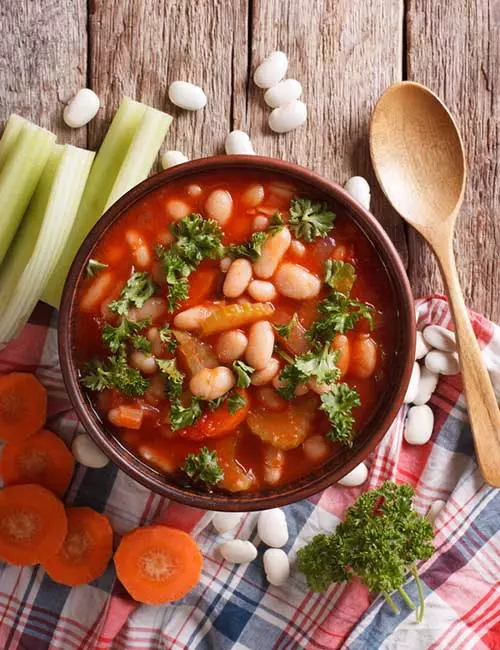
Ingredients
- ½ cup white beans
- 2 tomatoes, chopped
- 1 carrot, sliced
- 2 celery stalks, chopped
- 1 medium onion, chopped
- 1 clove of garlic, minced
- Salt to taste
- ½ teaspoon black pepper
- 1 cup vegetable broth
- A handful of parsley, chopped
- ¼ lime
How To Prepare
- Toss the onion, tomato, garlic powder, carrot, celery, white beans, salt, pepper, and vegetable broth into a pressure cooker.
- Pressure cook for about 20 minutes over medium flame.
- Once the pressure cooker cools down, open the lid, and pour out the soup.
- Add parsley and lime juice on top and enjoy a warm and cozy dinner.
These are fuss-free and delicious food options that you can make at home quickly. Check out the next section for some cooking tips you may follow to reduce the fat content of the food and maintain a low-fat diet.
Low-Fat Cooking Tips
- Use non-stick cookware to cook with less oil or butter.
- Prepare your food in broth and use cooking sprays to reduce oil usage.
- Instead of frying, consider options that require less oil, like roasting and grilling.
- Refrigerate soups and stews after preparation and skim off any solidified fat from the top before reheating and serving.
A low-fat diet is considered healthy as it may help you consume more good fats like fish and avocado and limit unhealthy fats like fried foods and baked goods. However, it also comes with its own set of benefits and side effects. Check them out in the next sections to determine if the diet is healthy for you.
Benefits Of A Low-Fat Diet
Limiting unhealthy fats will have the following benefits:
- May lower the risk of cardiovascular diseases.
- Makes you feel energetic and light.
- Helps lower inflammation in the body.
- May increase your longevity.
- May aid short-term weight loss
Vickie Ewell, a recipe developer, shared how following a low-fat low-carb diet helped improve her health. She said, “In two months time, I lost 45 pounds eating this way. When checked, my arteries were so clean that the cardiologist was utterly amazed. And my organ function was so good, she couldn’t believe how healthy I was (i).”
Let’s now take a look at the flipside.
Risks Or Side Effects Of A Low-Fat Diet
Avoiding fats completely may have the following repercussions:
- Difficulty in losing weight.
- May increase the risk of high triglycerides in the blood.
- May increase the risk of cardiovascular diseases.
- May cause vitamins and mineral deficiency.
Additionally, those following a low-fat diet might find themselves craving fatty foods. If these cravings are not addressed in a healthy way, they can lead to unhealthy eating habits such as binge eating.
Infographic: Tips To Keep In Mind While On A Low-fat Diet
A low-fat diet focuses on restricting daily consumption of fat. Individuals on this diet should consume fruits, vegetables, and lean protein food with a small amount of healthy fats. We have compiled a list of tips you should keep in mind while on a low-fat diet. Check out the infographic below!

Illustration: StyleCraze Design Team
The low-fat diet typically means consuming 15% of calories in dietary fat. You have to take saturated and trans fats in limited amounts while increasing the intake of mono and polyunsaturated fatty acids. This diet can help in obesity prevention and weight loss, but not as much as low-carb diets. However, it may help lower inflammation and improve heart health. Unfortunately, not taking fats at all can also increase CVD risk, besides causing a nutritional deficiency. So, do not follow this diet unless your dietitian recommends you to and designs a customized and balanced diet depending on your health condition, age, weight, etc.
Frequently Asked Questions
Are eggs part of a low-fat diet?
Yes, eggs are a part of the low-fat diet. Egg yolk is high in cholesterol, so, if your doctor asks you to avoid the yolk, consume just the white. Otherwise, you may consume 3 whole eggs per week.
How much fat is in a low-fat diet?
Typically, not more than 15% of your daily calorie intake if you are following a low-fat diet plan. But make sure you do not lower your fat intake below 15% of the daily calorie intake.
Are bananas good for a low-fat diet?
Yes. Bananas are low in fat. A 100 g of bananas contain only 0.29 g of fats (14).
Is shrimp low-fat?
Yes. Shrimps are low in fat. A 100g of shrimp contains 0.51g of fats and can be a part of a low-fat diet (15).
Get a better understanding of the workings of a low-fat diet. The video showcases the different types of fat, and whether this diet would be beneficial for you. Tap on the video before getting started with this diet!
Illustration: Low-Fat Diet Plan For Weight Loss – Benefits And Side Effects

Image: Stable Diffusion/StyleCraze Design Team
Personal Experience: Source
StyleCraze's articles are interwoven with authentic personal narratives that provide depth and resonance to our content. Below are the sources of the personal accounts referenced in this article.
i My First Experience with a Low Fat Low Carb Diet Called Kimkinshttps://kickincarbclutter.blogspot.com/2012/04/my-first-experience-with-low-fat-low.html
References
Articles on StyleCraze are backed by verified information from peer-reviewed and academic research papers, reputed organizations, research institutions, and medical associations to ensure accuracy and relevance. Read our editorial policy to learn more.
- Role of weight loss and polyunsaturated fatty acids in improving metabolic fitness in moderately obese, moderately hypertensive subjects. Journal of Hypertension, US National Library of Medicine, National Institutes of Health.
https://pubmed.ncbi.nlm.nih.gov/11593093/ - High Fat Diet with a High Monounsaturated Fatty Acid and Polyunsaturated/Saturated Fatty Acid Ratio Suppresses Body Fat Accumulation and Weight Gain in Obese Hamsters. Nutrients, US National Library of Medicine, National Institutes of Health.
https://www.ncbi.nlm.nih.gov/pmc/articles/PMC5691764/ - Omega-3 Fatty Acids and Inflammatory Processes. Nutrients, US National Library of Medicine, National Institutes of Health.
https://www.ncbi.nlm.nih.gov/pmc/articles/PMC3257651/ - Low-fat diets are preferred. The American Journal of Medicine, US National Library of Medicine, National Institutes of Health.
https://pubmed.ncbi.nlm.nih.gov/12566138/ - Saturated Fats Versus Polyunsaturated Fats Versus Carbohydrates for Cardiovascular Disease Prevention and Treatment”, Annual review of nutrition, US National Library of Medicine.
https://www.ncbi.nlm.nih.gov/pmc/articles/PMC4744652/ - Effects of low-carbohydrate diets versus low-fat diets on metabolic risk factors: a meta-analysis of randomized controlled clinical trials. American Journal of Epidemiology, US National Library of Medicine, National Institutes of Health.
https://pubmed.ncbi.nlm.nih.gov/23035144/ - Effects of low-carbohydrate and low-fat diets: a randomized trial. Annals of Internal Medicines, US National Library of Medicine, National Institutes of Health.
https://pubmed.ncbi.nlm.nih.gov/25178568/ - The Effects of a Low-Carbohydrate Diet vs. a Low-Fat Diet on Novel Cardiovascular Risk Factors: A Randomized Controlled Trial. Nutrients, US National Library of Medicine, National Institutes of Health.
https://www.ncbi.nlm.nih.gov/pmc/articles/PMC4586572/ - Very-low-fat diets may be associated with increased risk of metabolic syndrome in the adult population. Clinical Nutrition, US National Library of Medicine, National Institutes of Health.
https://pubmed.ncbi.nlm.nih.gov/26602244/ - Effects of low-fat compared with high-fat diet on cardiometabolic indicators in people with overweight and obesity without overt metabolic disturbance: a systematic review and meta-analysis of randomised controlled trials. The British Journal of Nutrition, US National Library of Medicine, National Institutes of Health.
https://pubmed.ncbi.nlm.nih.gov/29212558/ - Effect of Low-Fat vs Low-Carbohydrate Diet on 12-Month Weight Loss in Overweight Adults and the Association With Genotype Pattern or Insulin Secretion: The DIETFITS Randomized Clinical Trial. JAMA, US National Library of Medicine, National Institutes of Health.
https://www.ncbi.nlm.nih.gov/pmc/articles/PMC5839290/ - Adipose tissue inflammation induced by high-fat diet in obese diabetic mice is prevented by n-3 polyunsaturated fatty acids. Diabetologia, US National Library of Medicine, National Institutes of Health.
https://pubmed.ncbi.nlm.nih.gov/16783472/ - Effects of low-carbohydrate diets versus low-fat diets on metabolic risk factors in overweight and obese adults: A meta-analysis of randomized controlled trials
https://pmc.ncbi.nlm.nih.gov/articles/PMC9397119/ - Bananas ripe and slightly ripe raw USDA
https://fdc.nal.usda.gov/fdc-app.html#/food-details/1105314/nutrients - Crustaceans shrimp raw USDA
https://fdc.nal.usda.gov/fdc-app.html#/food-details/175179/nutrients
Read full bio of Madhu Sharma
Read full bio of Arshiya Syeda
Read full bio of Moksha Gandhi










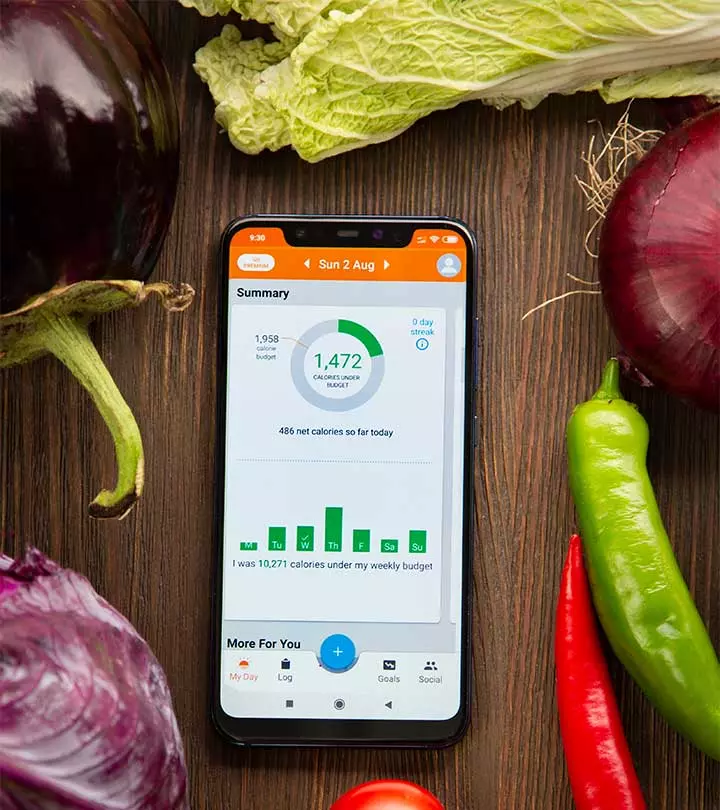


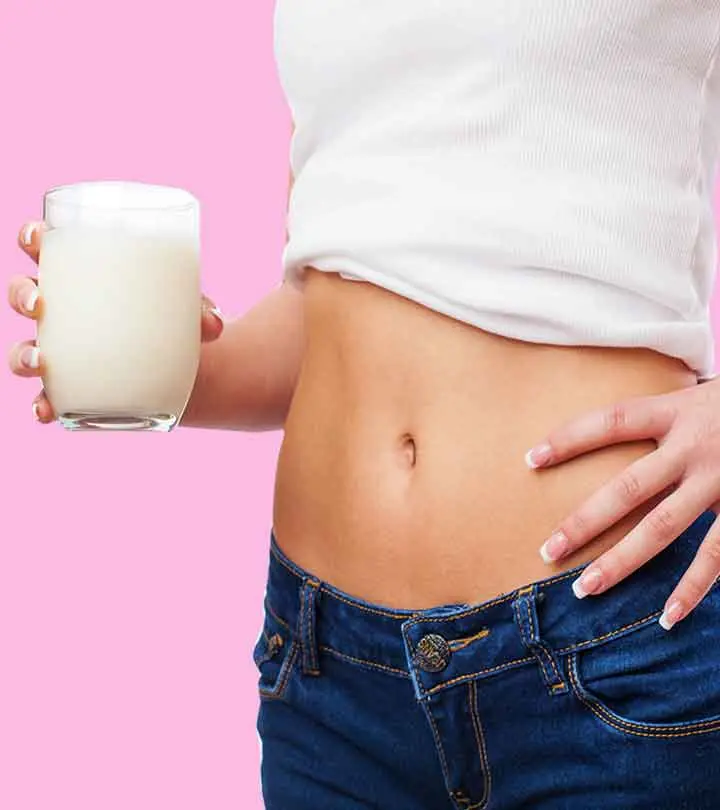

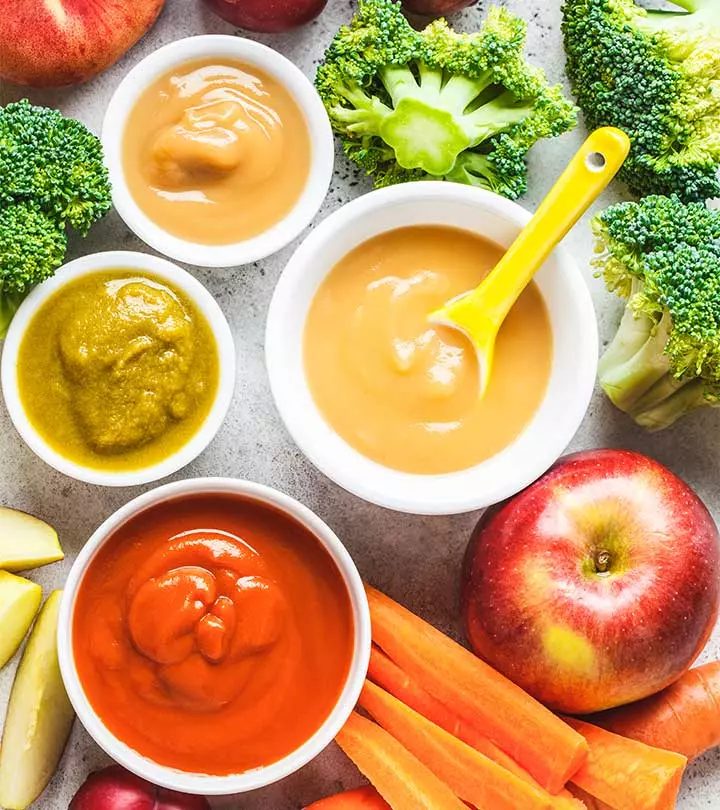

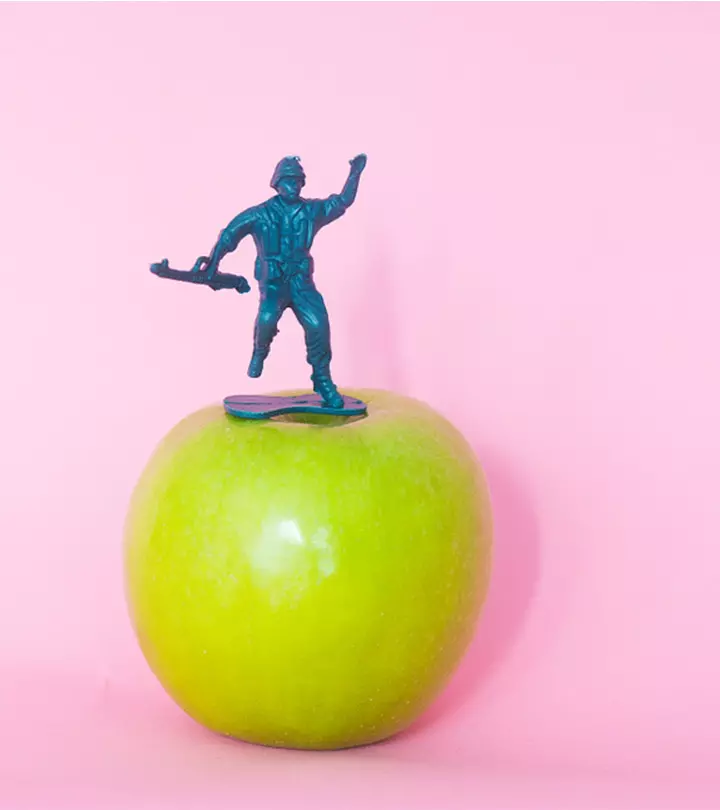
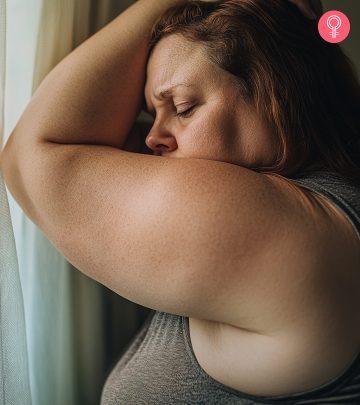

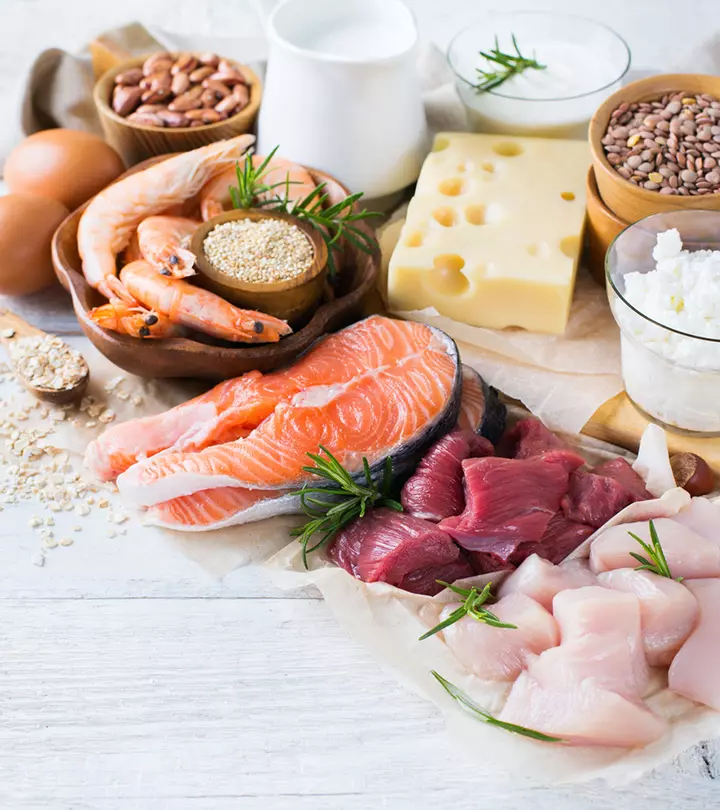

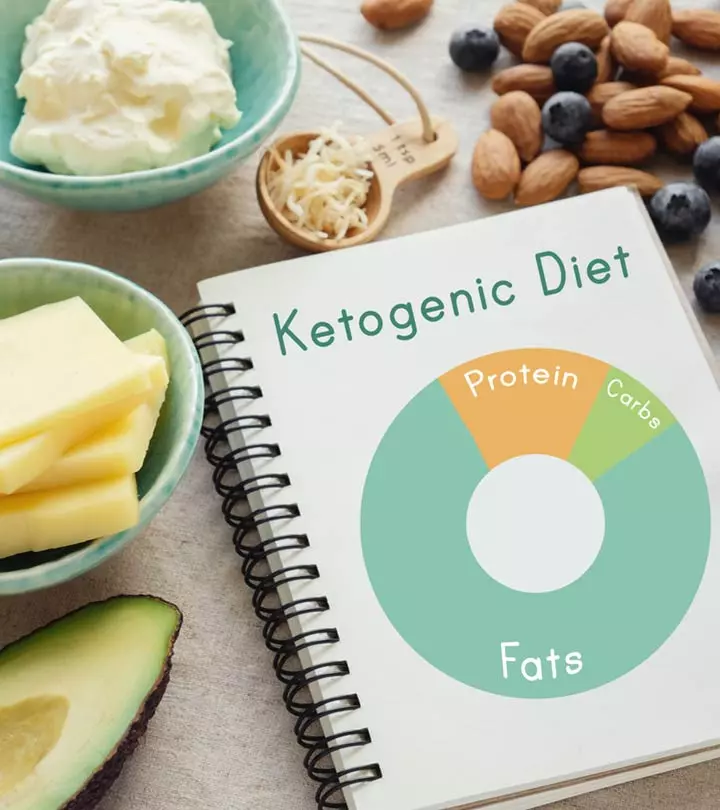

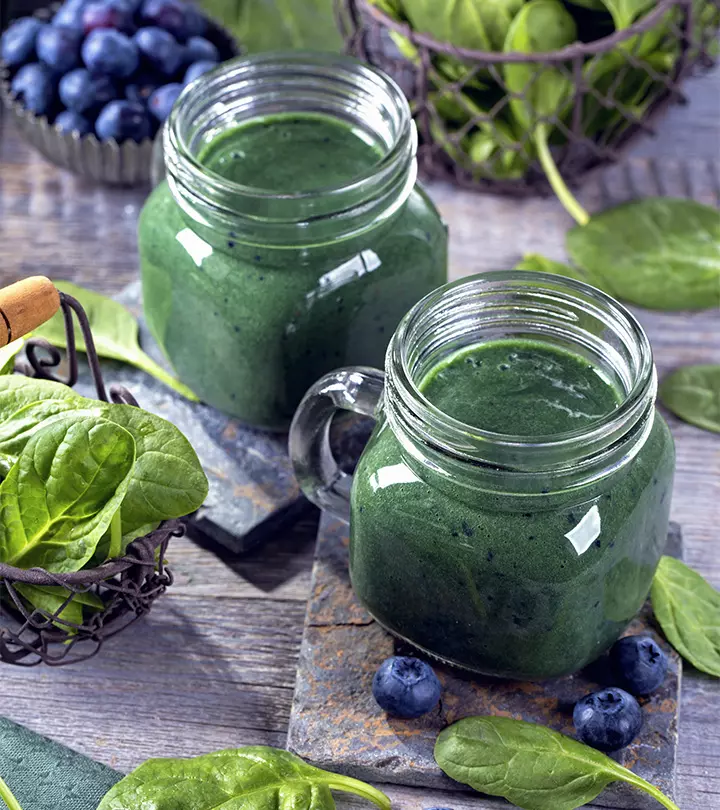

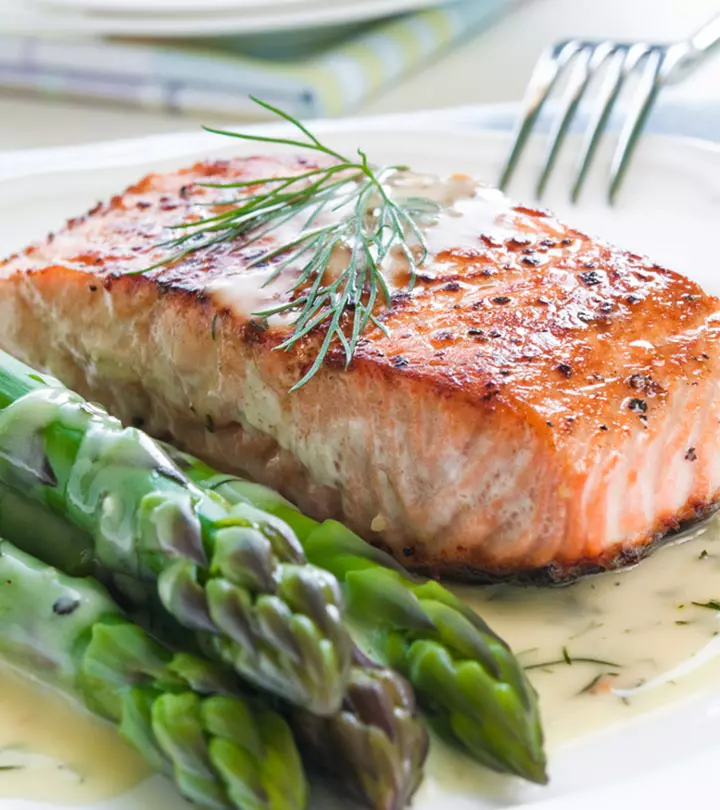
Community Experiences
Join the conversation and become a part of our empowering community! Share your stories, experiences, and insights to connect with other beauty, lifestyle, and health enthusiasts.